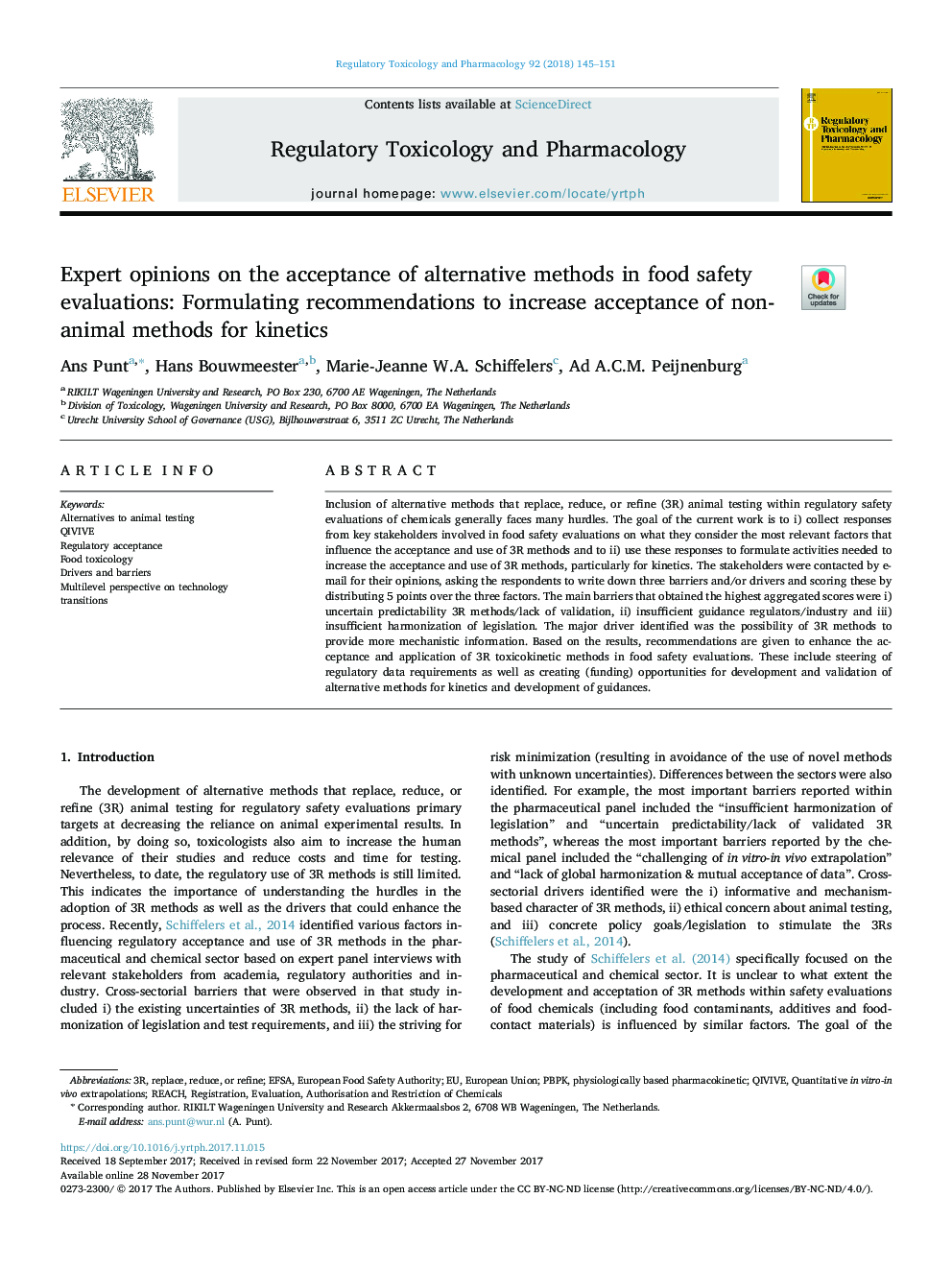| Article ID | Journal | Published Year | Pages | File Type |
|---|---|---|---|---|
| 8551894 | Regulatory Toxicology and Pharmacology | 2018 | 7 Pages |
Abstract
Inclusion of alternative methods that replace, reduce, or refine (3R) animal testing within regulatory safety evaluations of chemicals generally faces many hurdles. The goal of the current work is to i) collect responses from key stakeholders involved in food safety evaluations on what they consider the most relevant factors that influence the acceptance and use of 3R methods and to ii) use these responses to formulate activities needed to increase the acceptance and use of 3R methods, particularly for kinetics. The stakeholders were contacted by e-mail for their opinions, asking the respondents to write down three barriers and/or drivers and scoring these by distributing 5 points over the three factors. The main barriers that obtained the highest aggregated scores were i) uncertain predictability 3R methods/lack of validation, ii) insufficient guidance regulators/industry and iii) insufficient harmonization of legislation. The major driver identified was the possibility of 3R methods to provide more mechanistic information. Based on the results, recommendations are given to enhance the acceptance and application of 3R toxicokinetic methods in food safety evaluations. These include steering of regulatory data requirements as well as creating (funding) opportunities for development and validation of alternative methods for kinetics and development of guidances.
Keywords
Related Topics
Life Sciences
Environmental Science
Health, Toxicology and Mutagenesis
Authors
Ans Punt, Hans Bouwmeester, Marie-Jeanne W.A. Schiffelers, Ad A.C.M. Peijnenburg,
